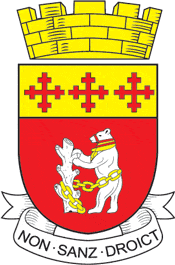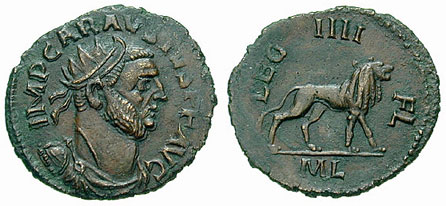|
Mary Trye
Mary Trye (born 1642) was a woman who practiced medicine in Warwickshire, England and the city of London, in an era when women were not permitted to become licensed physicians. Little is known about Trye or her life. She was baptized as Mary Dowde on July 30, 1642; was married in 1660 to a merchant, Edward Stanthwaite; was widowed; and in 1670 married Berkeley Trye, with whom she had a son, William, in 1671. In 1675, she published ''Medicatrix, Or The Woman-Physician,''a defense of her father, Thomas O'Dowde, who died caring for patients during the Great Plague of London, and whose practice she continued. in ''Medicatrix'' she asserted her right to write and publish. She defended the practice of iatrochemistry as opposed to the Galenic approach supported by the official Royal College of Physicians The Royal College of Physicians (RCP) is a British professional membership body dedicated to improving the practice of medicine, chiefly through the accreditation of physicians b ... [...More Info...] [...Related Items...] OR: [Wikipedia] [Google] [Baidu] |
Great Plague Of London
The Great Plague of London, lasting from 1665 to 1666, was the last major epidemic of the bubonic plague to occur in England. It happened within the centuries-long Second Pandemic, a period of intermittent bubonic plague epidemics that originated in Central Asia in 1331 (the first year of the Black Death), and included related diseases such as pneumonic plague and septicemic plague, which lasted until 1750. The Great Plague killed an estimated 100,000 people—almost a quarter of London's population—in 18 months. The plague was caused by the ''Yersinia pestis'' bacterium, which is usually transmitted through the bite to a human by a flea or louse. The 1665–66 epidemic was on a much smaller scale than the earlier Black Death pandemic. It became known afterwards as the "great" plague mainly because it was the last widespread outbreak of bubonic plague in England during the 400-year Second Pandemic. London in 1665 The plague was endemic in 17th-century London, as it ... [...More Info...] [...Related Items...] OR: [Wikipedia] [Google] [Baidu] |
Iatrochemistry
Iatrochemistry (; also known as chemiatria or chemical medicine) is a branch of both chemistry and medicine. Having its roots in alchemy, iatrochemistry seeks to provide chemical solutions to diseases and medical ailments. This area of science has fallen out of use in Europe since the rise of modern establishment medicine. However, iatrochemistry was popular between 1525 and 1660, especially in the Low Countries. Its most notable leader was Paracelsus, an important Swiss alchemist of the 16th century. Iatrochemists believed that physical health was dependent on a specific balance of bodily fluids. Iatrochemical therapies and concepts are still in wide use in South Asia, East Asia and amongst their diasporic communities worldwide. History in Europe The preparation of medicines had become a part of alchemy by the early modern period. Around 1350, John of Rupescissa advocated the extraction of the "essence" of both plants and minerals. He often used two relatively new substanc ... [...More Info...] [...Related Items...] OR: [Wikipedia] [Google] [Baidu] |
Royal College Of Physicians
The Royal College of Physicians (RCP) is a British professional membership body dedicated to improving the practice of medicine, chiefly through the accreditation of physicians by examination. Founded by royal charter from King Henry VIII in 1518, the RCP is the oldest medical college in England. It set the first international standard in the classification of diseases, and its library contains medical texts of great historical interest. The college is sometimes referred to as the Royal College of Physicians of London to differentiate it from other similarly named bodies. The RCP drives improvements in health and healthcare through advocacy, education and research. Its 40,000 members work in hospitals and communities across over 30 medical specialties with around a fifth based in over 80 countries worldwide. The college hosts six training faculties: the Faculty of Forensic and Legal Medicine, the Faculty for Pharmaceutical Medicine, the Faculty of Occupational Medicine the Fac ... [...More Info...] [...Related Items...] OR: [Wikipedia] [Google] [Baidu] |
Jan Baptist Van Helmont
Jan Baptist van Helmont (; ; 12 January 1580 – 30 December 1644) was a chemist, physiologist, and physician from Brussels. He worked during the years just after Paracelsus and the rise of iatrochemistry, and is sometimes considered to be "the founder of pneumatic chemistry". Van Helmont is remembered today largely for his ideas on spontaneous generation, his 5-year willow tree experiment, and his introduction of the word "gas" (from the Greek word ''chaos'') into the vocabulary of science. His name is also found rendered as Jan-Baptiste van Helmont, Johannes Baptista van Helmont, Johann Baptista von Helmont, Joan Baptista van Helmont, and other minor variants switching between ''von'' and ''van''. Early life and education Jan Baptist van Helmont was the youngest of five children of Maria (van) Stassaert and Christiaen van Helmont, a public prosecutor and Brussels council member, who had married in the Sint-Goedele church in 1567.Van den Bulck, E. (1999Johannes Bapti ... [...More Info...] [...Related Items...] OR: [Wikipedia] [Google] [Baidu] |
History Of Warwickshire
This is about the history of the county Warwickshire situated in the English Midlands. Historically, bounded to the north-west by Staffordshire, by Leicestershire to the north-east, Northamptonshire to the east, Worcestershire to the west, Oxfordshire to the south and Gloucestershire to the south-west. Areas historically part of Warwickshire include Coventry, Solihull, Sutton Coldfield and much of central Birmingham including Aston and Edgbaston. These became part of the metropolitan county of West Midlands (Sutton Coldfield becoming part of Birmingham) following local government re-organisation in 1974 after the passage of the Local Government Act 1972.HMSO. Local Government Act 1972. 1972 c.70 Much of northwestern Warwickshire, including that area now forming part of Coventry, Solihull and Birmingham, was covered by the ancient Forest of Arden which was still the case at the time of the Domesday Book but much of which was later cut down to provide fuel for industrialisatio ... [...More Info...] [...Related Items...] OR: [Wikipedia] [Google] [Baidu] |
Folk Healers
Folk or Folks may refer to: Sociology *Nation *People * Folklore ** Folk art ** Folk dance ** Folk hero ** Folk music *** Folk metal *** Folk punk *** Folk rock ** Folk religion * Folk taxonomy Arts, entertainment, and media * Folk Plus or Folk +, an Albanian folk music channel * Folks (band), a Japanese band * ''Folks!'', a 1992 American film People with the name * Bill Folk (born 1927), Canadian ice hockey player * Chad Folk (born 1972), Canadian football player * Elizabeth Folk (c. 16th century), British martyr; one of the Colchester Martyrs * Eugene R. Folk (1924–2003), American ophthalmologist * Joseph W. Folk (1869–1923), American lawyer, reformer, and politician * Kevin Folk (born 1980), Canadian curler * Nick Folk (born 1984), American football player * Rick Folk (born 1950), Canadian curler * Robert Folk (born 1949), American film composer Other uses * Folk classification, a type of classification in geology * Folks Nation, an alliance of American street gangs ... [...More Info...] [...Related Items...] OR: [Wikipedia] [Google] [Baidu] |
History Of London
The history of London, the capital city of England and the United Kingdom, extends over 2000 years. In that time, it has become one of the world's most significant financial and cultural capital cities. It has withstood plague, devastating fire, civil war, aerial bombardment, terrorist attacks, and riots. The City of London is the historic core of the Greater London metropolis, and is today its primary financial district, though it represents only a small part of the wider metropolis. Foundations and prehistory Some recent discoveries indicate probable very early settlements near the Thames in the London area. In 1993, the remains of a Bronze Age bridge were found on the Thames's south foreshore, upstream of Vauxhall Bridge. This bridge either crossed the Thames or we ... [...More Info...] [...Related Items...] OR: [Wikipedia] [Google] [Baidu] |
17th-century English Women Writers
The 17th century lasted from January 1, 1601 ( MDCI), to December 31, 1700 ( MDCC). It falls into the early modern period of Europe and in that continent (whose impact on the world was increasing) was characterized by the Baroque cultural movement, the latter part of the Spanish Golden Age, the Dutch Golden Age, the French ''Grand Siècle'' dominated by Louis XIV, the Scientific Revolution, the world's first public company and megacorporation known as the Dutch East India Company, and according to some historians, the General Crisis. From the mid-17th century, European politics were increasingly dominated by the Kingdom of France of Louis XIV, where royal power was solidified domestically in the civil war of the Fronde. The semi-feudal territorial French nobility was weakened and subjugated to the power of an absolute monarchy through the reinvention of the Palace of Versailles from a hunting lodge to a gilded prison, in which a greatly expanded royal court could be more easily ... [...More Info...] [...Related Items...] OR: [Wikipedia] [Google] [Baidu] |
17th-century English Medical Doctors
The 17th century lasted from January 1, 1601 ( MDCI), to December 31, 1700 ( MDCC). It falls into the early modern period of Europe and in that continent (whose impact on the world was increasing) was characterized by the Baroque cultural movement, the latter part of the Spanish Golden Age, the Dutch Golden Age, the French ''Grand Siècle'' dominated by Louis XIV, the Scientific Revolution, the world's first public company and megacorporation known as the Dutch East India Company, and according to some historians, the General Crisis. From the mid-17th century, European politics were increasingly dominated by the Kingdom of France of Louis XIV, where royal power was solidified domestically in the civil war of the Fronde. The semi-feudal territorial French nobility was weakened and subjugated to the power of an absolute monarchy through the reinvention of the Palace of Versailles from a hunting lodge to a gilded prison, in which a greatly expanded royal court could be more easily k ... [...More Info...] [...Related Items...] OR: [Wikipedia] [Google] [Baidu] |
1642 Births
Year 164 ( CLXIV) was a leap year starting on Saturday (link will display the full calendar) of the Julian calendar. At the time, it was known as the Year of the Consulship of Macrinus and Celsus (or, less frequently, year 917 ''Ab urbe condita''). The denomination 164 for this year has been used since the early medieval period, when the Anno Domini calendar era became the prevalent method in Europe for naming years. Events By place Roman Empire * Emperor Marcus Aurelius gives his daughter Lucilla in marriage to his co-emperor Lucius Verus. * Avidius Cassius, one of Lucius Verus' generals, crosses the Euphrates and invades Parthia. * Ctesiphon is captured by the Romans, but returns to the Parthians after the end of the war. * The Antonine Wall in Scotland is abandoned by the Romans. * Seleucia on the Tigris is destroyed. Births * Bruttia Crispina, Roman empress (d. 191) * Ge Xuan (or Xiaoxian), Chinese Taoist (d. 244) * Yu Fan Yu Fan (, , ; 164–233), court ... [...More Info...] [...Related Items...] OR: [Wikipedia] [Google] [Baidu] |







